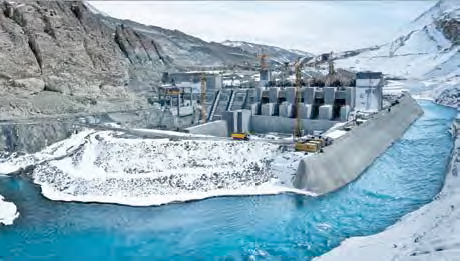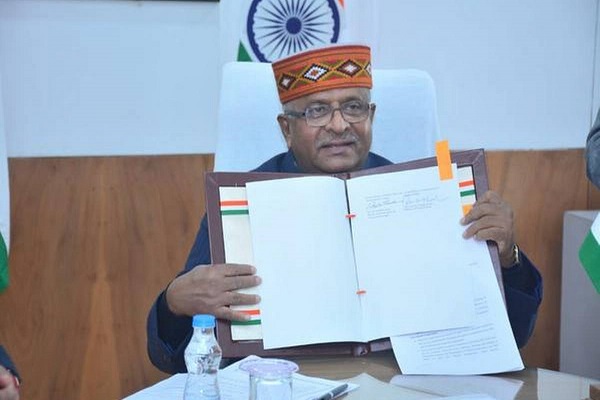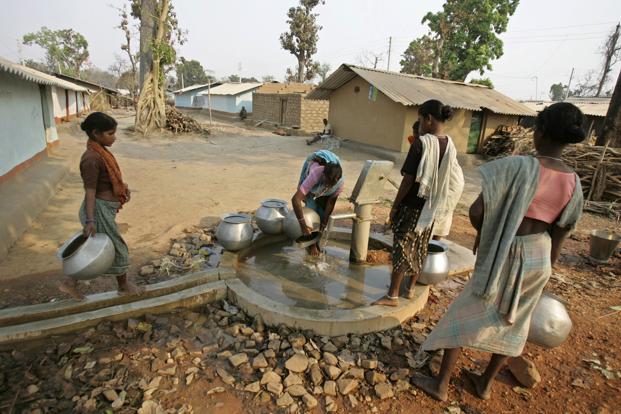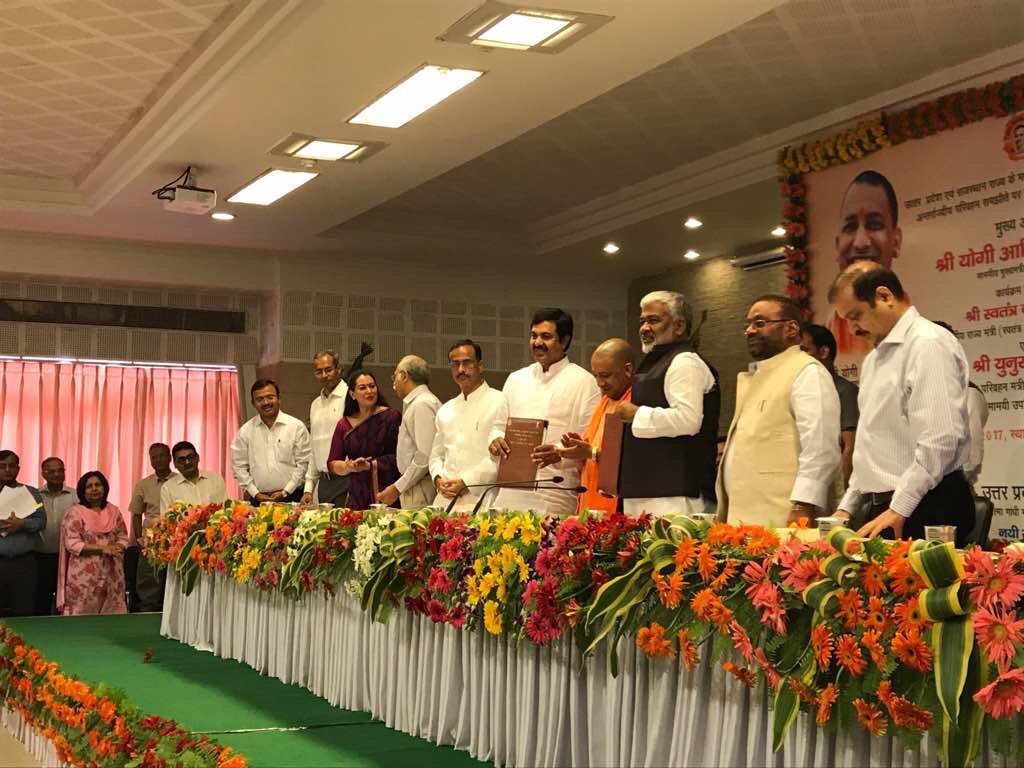
Situated 11,000 feet above sea level, the 45 Megawatts Nimoo Bazgo Hydroelectric Project, located 70 kms from Leh, will ensure reliable power supply to the electricity deficient Ladakh region. In spite of freezing climate conditions, for the first time in India concreting was done at – 38 degree centigrade temperature
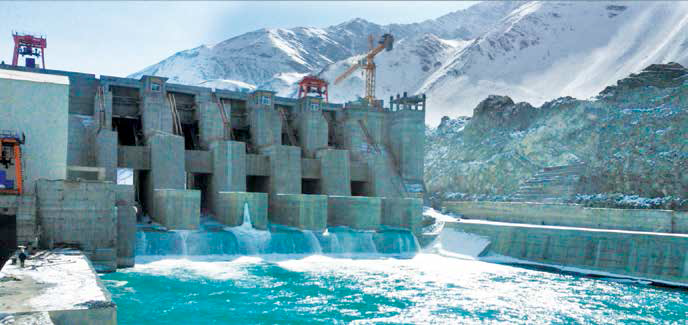
The Nimoo Bazgo Hydroelectric Project (HEP) is a run-of-the-river scheme with a capacity of 45 MW that has been constructed by HCC on the Zanskar River – a tributary of river Indus, for the National Hydroelectric Power Corporation in Leh district of Jammu & Kashmir. The project involved the construction of a concrete gravity dam, diversion channel, surface power house of 45 MW, a short tail race channel, transformer yard and switch yard. The project envisages utilizing a gross head of 37.25 m to generate 239.30 million units of power in a 90 percent dependable year with an installed capacity of 45 MW.
The total catchment area of the HEP is 58,880 sq km, while the total area under submergence at full reservoir level is 3.42 sq km. The 247.9 m dam has been designed for a flood discharge of 4500 cumec at full reservoir level at 3093 m. The heavy snowfall and harsh climatic conditions in this region result in road closure from November to May, which in effect means a six-month cut-off period for logistics and transport. In order to execute the project in a sustained manner and ensure timely deliverables, the scenario called for precise planning, rigorous scheduling of work and meticulous project management.
Construction Sequences
The civil works of the project mainly involved excavation, rock supports, concreting and reinforcement, based on the nature of work. Concreting was carried out at river diversion, dam construction, construction of power house along with other related works like tail pool, switch yard and rock protection.
• River Diversion: The river diversion involved two lakh cubic meters (cu m) of rock excavation and one lakh cubic meters of common excavation. During the blasting, adequate precautions were taken to ensure the wellbeing of the heritage structure down the river side. Rock stitching works were carried out with rock bolts, grouting, wire meshing and shotcrete. The Downstream side of the Downstream Coffer Dam was protected with 150 mm reinforced concrete.
• Dam: The 247.9 m dam has been designed for a flood discharge of 4500 cumec at full reservoir level at 3093 m. The overflow section has been shaped as per the ogee profile with crest elevation at El 3065 m. The dam excavation was mainly common excavation. For the shuttering, the project team used steel shuttering plates and for reinforcement, FE 500 grade reinforcements were used. As part of the excavation carried out for the dam, 45,000 cu m common excavation and 48,000 cu m of rock excavation was done. During winter, concreting of dam was totally stopped due to very low temperature levels.
• Powerhouse: The surface power house is located on the right bank at the toe of the dam. The powerhouse complex comprises the following main features powerhouse cavern with three generating units, transformer cavern and draft tube gate operation chamber, tail pool. The powerhouse is with an installed capacity of 45 MW.
Plant & Machinery
The selection of equipment for this project became more critical because the project was situated at a height of 11000 feet from mean sea level (MSL) with extreme cold conditions with scarcity of oxygen and water for engine driven equipments created more apprehension and severe cold caused metallurgical failure of the equipment. The project had to hire an IL76 medium cargo jet from Air Force through which three ROC 203 and three portable diesel air compressors were air-lifted from Chandigarh to Leh. The road was opened in the month of May end and then the mobilization of all production related equipment got started. At present, the project has around 184 equipment which includes heavy earthmovers, excavators, dozers, ROCs, air compressors, dumpers, EGT drilling rig, crawler crane, mobile crane, diesel generator sets etc. and plants like 200 TPH crushing plant, 120 m3 batching plant, ice plants, chilling plant etc.
Sub-Zero Temperature
The hostile environmental conditions at an altitude of above 11,000 ft above sea level and severe winter conditions with zero degree temperature for almost six months posed many operational, logistical and technical challenges during the project’s execution. The lubes and other liquids used for running the construction would freeze due to the extreme cold, resulting in frequent machine stoppages. The hot water used for cleaning the concrete surfaces or conducted through heavy duty pipes would freeze on contact with the air as well. Wherever, the hot water came in contact with the air in the batching plant, it would freeze immediately and the batching plant would stop working. Even the aggregates in the hopper at the outlet point would choke, resulting in the consequential stoppage of the plant. Handling and installation of reinforcement in sub-zero temperature was extremely difficult too. All surfaces in and around an open area that used water became completely frozen and glass-like, slippery and were unsafe for working.
During winters, the presence of snow on the roads made heavy vehicles prone to skidding. In order to prevent slippage on the icy terrain, snow chains were fixed on the wheels of the earth-moving equipment (loaders, tippers and transit mixers). To prevent the freezing of high speed diesel (HSD), a variant of aviation turbine fuel (ATF) was mixed with it, together with some additives in a predetermined ratio. Heating pads were installed on the fuel tanks, to ensure that the engines remained warm and the oil did not freeze. To protect the freshly poured concrete surface from freezing , hot water curing was carried out and the surface was covered with temporary insulation panel throughout the winter. Prefabricated Puff for covering of concrete structure has been done for the first time in India to safeguard the structure against the cold climatic conditions.
Overcoming Power Shortage
Situated deep in Jammu and Kashmir at the border with Tibet, Leh is the capital of Ladakh and also India’s second largest district. It is based at a height of 3,505 meters above sea level. Owing to its key location, Ladakh serves as a strategic hub for the district administration. However, the availability of electricity in this area is grossly inadequate. At present, the local population of around 2.70 lakh and the government and defense establishment in this region is totally dependent on diesel generator sets for electricity generation, due to which a huge quantity of diesel needs to be stored for usage during the winter season. The National Hydroelectric Power Corporation had planned the Nimoo Bazgo hydro electric project in Leh (45 MW) along with the Chutak HEP (44 MW, to overcome the acute power shortage in this region. The total capacity of 89 MW from both these projects will be fully dedicated for use in the Ladakh region.

